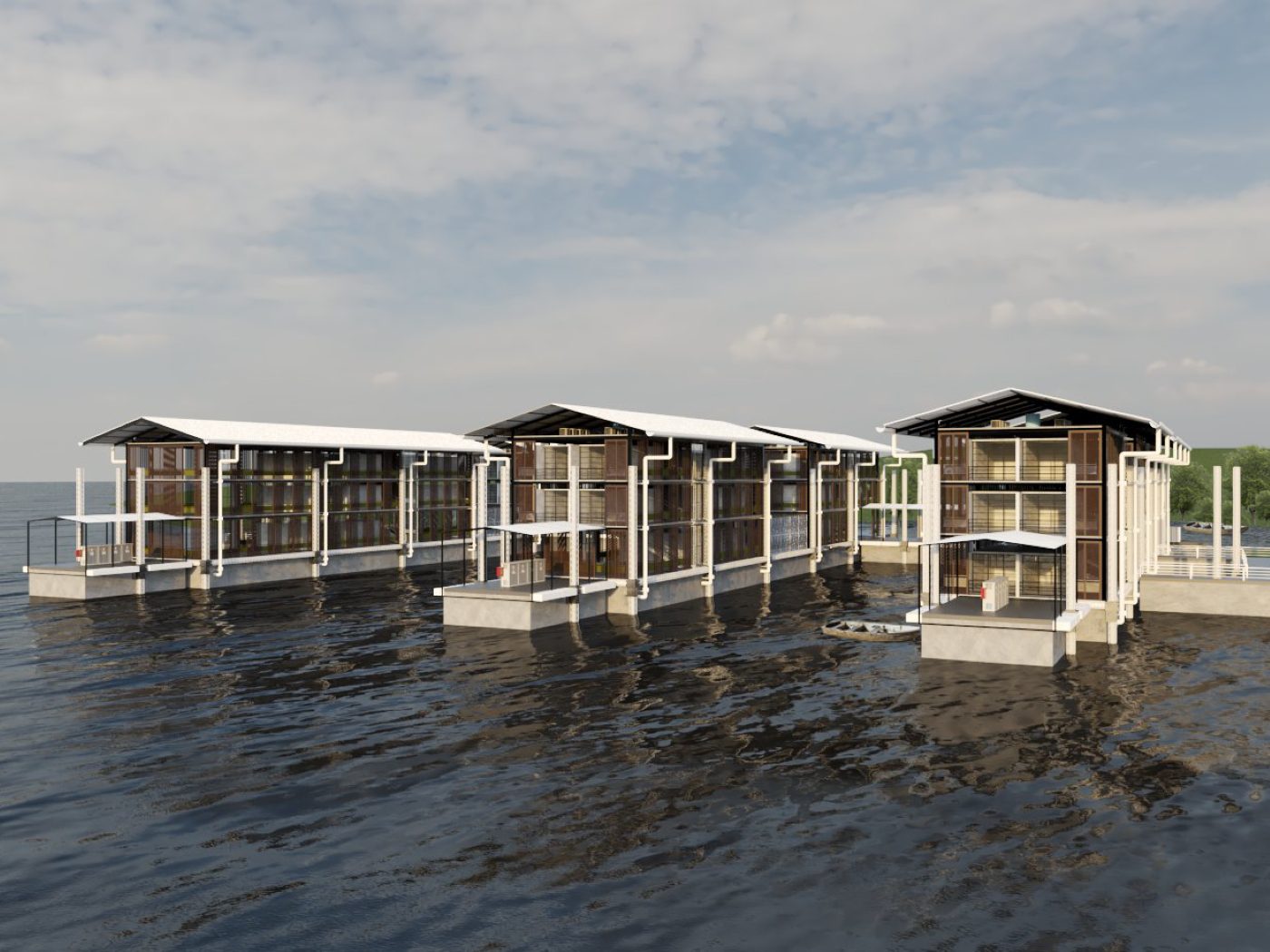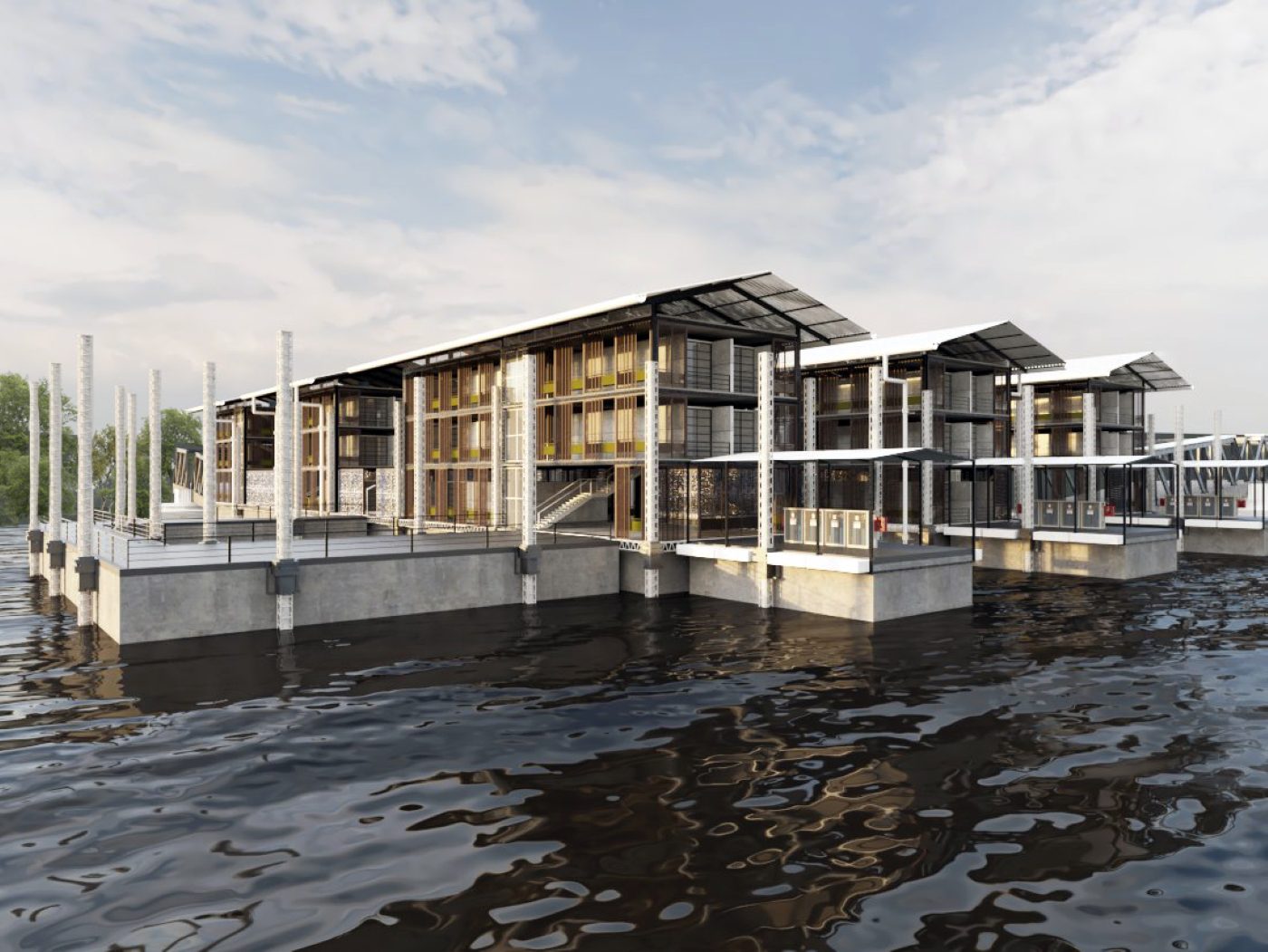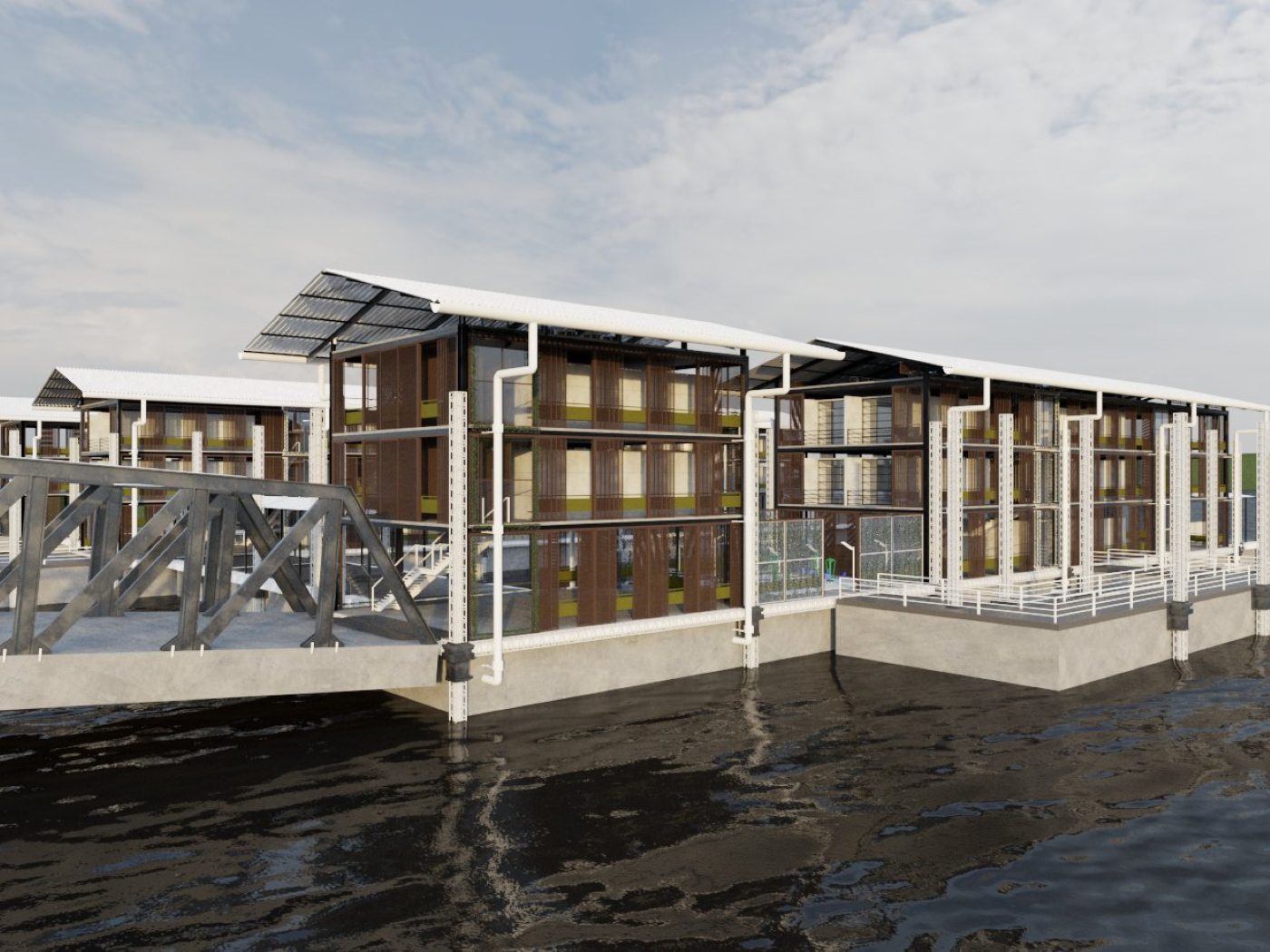Project implementation: Brazil
Project development: Brazil
Bianca Cuvello, an architect and urban planner with a degree from the Federal University of Amazonas and a native of Manaus, understands that the urban development of the Amazonas capital is intrinsically conditioned by the natural environment, especially the extensive river basin that characterizes the region. However, rapid urbanization has intensified the phenomenon of peripheralization, creating complex challenges related to social inclusion and access to decent housing. Spatial segregation, in this context, pushes low-income populations to areas where infrastructure is precarious and insufficient.
Given this scenario, amphibious housing emerges as an alternative capable of mitigating these problems, promoting a more balanced integration between residents and floodplain and wetland areas. Amphibious architecture, designed to be built over water, seeks to combine sustainability and technological innovation with construction solutions adapted to the surrounding environment, combining two fundamental structural typologies: stilt housing and floating housing.
This strategy reaffirms the limits and potential imposed by the Amazon's natural constraints, while enabling the occupation of historically neglected and sparsely populated urban spaces. Furthermore, the proposal engages with the city's social and housing issues through design guidelines aligned with the 5 Points for Amazonian Architecture (Cereto, 2024). Therefore, the objective is to reflect on housing solutions that not only respond to Manaus's environmental specificities but also promote the social integration of marginalized populations into the established urban fabric.
Thus, the amphibious housing typology aims to ensure functionality and efficiency, incorporating appropriate equipment and construction systems consistent with local economic constraints, especially in a context marked by scarcity of resources.




